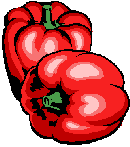|


Also call:
 | DESCRIPTION
|
The winter Savoury is stiff kind of
herb that grows into a compact bush, and flowers that are small with a
two-lipped white colour. Sage leaves are glossy, thin and narrow with
length that is about 12mm long. The summer Savoury is different as it
is longer and softer, the colour is of a bronze-green and it has a pale pink
flowers which blooms the same time as the winter Savoury. The seeds of
the summer Savoury produce easily, has a slim, erect and brittle stems.
 | HISTORY AND ORIGIN
|
Savoury is native to the eastern
Mediterranean and south-east Asia. But elswhere was grown on the dry
chalky soils and rocky hillsides. Savoury has been used since 2000
years ago in foods and then the Romans introduced it to the Europeans and
the British. As the Germans found out, how well this Savoury herb
mixed with green and dried beans that they then named this herb the 'bean
herb'.
 | BUYING AND STORAGE
|
Savoury is mostly sold dried and ground
form as they find that the fresh dried leaves are hard and less convenient.
Grinding herbs do increase the flavour. Best stored in airtight glass
jars.
 | PREPARATION AND USE
|
The usage of both herbs are use the
same ways. Fine chopped summer Savoury leaves are use in all kind of
beans dishes with either melted butter or in a creamy sauce. Summer
Savoury brings out the flavour in the chicken dishes, crumbed
pork, veal and seafood, when a touch of Savoury powder being added to the
breadcrumbs. Savoury can be used as a substitute for pepper, when a
milder, different flavour is needed.
|




